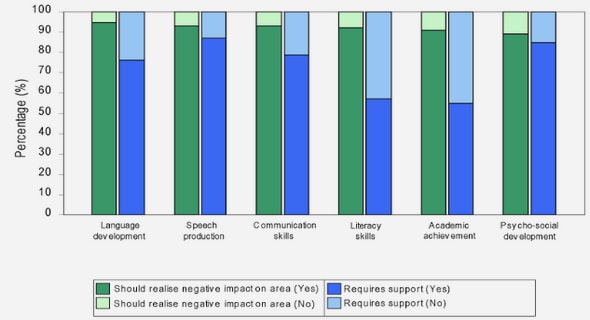(Downloads - 0)
For more info about our services contact : help@bestpfe.com
Table of contents
CHAPTER I. INTRODUCTION
1 WHICH ROLE FOR ROOTS IN GLOBAL FOOD PRODUCTION?
1.1 Challenges for global agriculture
1.2 Roots for a second Green Revolution
2 ROOT SYSTEMS AND THEIR PHENOTYPIC VARIATION
2.1 Components of phenotypic variation: Phenotypic plasticity and developmental instability
2.2 Root developmental instability as a foraging strategy to optimize efficiency of resource uptake
2.3 Origins of root developmental instability
2.3.1 Initiation of lateral root primordia
2.3.2 Development of lateral root primordia
2.3.3 Elongation of lateral roots
2.4 Signaling clues involved in lateral root development
2.5 Modelling root growth variations
2.5.1 Various modelling approaches of the root growth variations
2.5.2 Towards a spatio-temporal analysis of root growth and root system architecture
3 OBJECTIVES OF THIS THESIS
AUTHORS CONTRIBUTIONS
ACKNOWLEDGEMENTS
CHAPTER REFERENCES
CHAPTER II. LATERAL ROOT GROWTH PATTERN IN MAIZE
1 SPATIO-TEMPORAL ANALYSIS OF EARLY ROOT SYSTEM DEVELOPMENT IN TWO CEREALS, PEARL MILLET AND MAIZE, REVEALS THREE TYPES OF LATERAL ROOTS AND A STATIONARY RANDOM BRANCHING PATTERN ALONG THE PRIMARY ROOT
AUTHORS CONTRIBUTIONS
ABSTRACT
1.1 INTRODUCTION
1.2 RESULTS
1.2.1 Model-based clustering of lateral root growth rate profiles reveals three growth patterns for pearl millet and maize lateral roots
1.2.2 Comparison of apical diameter profiles and growth rate profiles for the three classes of lateral roots identified in maize
1.2.3 Linking root growth profile with root anatomy
1.2.4 Analyzing the primary root branching pattern
1.3 DISCUSSION
1.3.1 An original methodology to classify lateral roots
1.3.2 Origin and roles for the three lateral root types
1.3.3 Positioning of the three lateral root classes is random along the primary root
1.3.4 Extending the longitudinal modeling framework for studying the whole growth profile of type A lateral roots
1.3.5 A new look at lateral roots in future high-throughput phenotyping analyses?
1.4 MATERIALS AND METHODS
1.4.1 Experimental
1.4.2 Imaging and image processing
1.4.3 Image analysis
1.4.4 Correction of growth rate profiles
1.4.5 Model description
1.4.6 Root anatomy
2 ANALYZING THE MODULATION OF THE LATERAL ROOT GROWTH PATTERN IN DIFFERENT CONTEXTS
2.1 METHODS
2.1.1 Description of rhizotron experiments and associated post-harvesting analyses
2.1.2 Aeroponic experiment in collaboration with UCL
2.2 RESULTS
2.2.1 Model-based analysis of the influence of treatments on lateral root growth rate profiles and apical diameters
2.2.2 Comparison between treatments
CHAPTER REFERENCES
APPENDIX AND SUPPLEMENTARY MATERIAL
SUPPLEMENTARY REFERENCES
CHAPTER III. IDENTIFYING DEVELOPMENTAL ZONES IN MAIZE LATERAL ROOT CELL LENGTH PROFILES AUTHORS
ABSTRACT
1 INTRODUCTION
2 MATERIAL AND METHODS
2.1 Plant material, growth conditions and lateral root apex harvest
2.2 Image analysis and acquisition of lateral root cell length profiles and morphological properties
2.3 Multiple change-point models for identifying development zones in lateral root cell length profiles
2.3.1 Definition of heteroscedastic piecewise Gaussian linear models and Gaussian change in the variance models
2.3.2 Illustration of the application of multiple change-point models on selected maize lateral root apices
3 RESULTS
3.1 Selection of the number of developmental zones
3.2 Discontinuity of the selected piecewise linear functions
3.3 The limits between developmental zones is explained both by a change in slope and in residual standard deviation
3.4 Consistency of the EZ-MZ limit with the first root hair position
3.5 A strong modulation of the developmental pattern was observed among lateral roots
3.6 Choice of the variables summarizing lateral root development for the metaanalysis
3.7 Exploration of the diversity of lateral roots using principal components analysis
4 DISCUSSION
4.1 Successive developmental zones in the root apex are well characterized by piecewise linear functions
4.2 Interpretations of the changes in residual standard deviation at the limit between developmental zones
4.3 Comparison between segmented regression models and multiple change-points models
5 CONCLUSION
ACKNOWLEDGEMENTS
AUTHOR CONTRIBUTIONS
CHAPTER REFERENCES
APPENDIX AND SUPPLEMENTARY MATERIAL
SUPPLEMENTARY REFERENCES
CHAPTER IV. EXPLORING THE INTRINSIC ORIGIN OF GROWTH VARIATIONS IN MAIZE LATERAL ROOTS
1 METHODS
1.1 Observation of lateral root primordia
1.2 Root anatomy
1.2.1 Plant material
1.2.2 Root cross-sectioning
1.2.3 Image acquisition and processing
1.2.4 Root measurements
1.3 Epidermal cell length profiles
1.4 Expert labelling of lateral roots: the A-B-C classification
1.5 Sugar content
1.5.1 Root sampling
1.5.2 Sugar content quantification
1.6 Gene expression
1.6.1 Total RNA extraction
1.6.2 Quantitative real-time PCR (qRT-PCR) analysis
2 RESULTS OF MULTI-SCALE ANALYSIS
2.1 Early lateral root development: analysis of the variations in lateral root primordium development
2.1.1 Longitudinal development of lateral root primordia
2.1.2 Longitudinal window for the initiation of lateral root primordia
2.1.3 Relationship between inter-lateral organ distance and lateral root primordium development
2.1.4 Lateral root emergence
2.1.5 Summary
2.2 Anatomical lateral root structure
2.2.1 Root labeling and growth profiles associated to anatomical
2.2.2 Root anatomical features are tightly correlated, but much less to root elongation
2.2.3 Longitudinal variations in lateral root anatomy
2.2.4 Relationship between longitudinal variations in root anatomy and root elongation
2.2.5 Summary
2.3 Epidermal cell length pattern in the growing zone of lateral roots
2.3.1 Root labeling
2.3.2 Analysis of longitudinal cell length profiles reveals a large range of lengths of the growing zone
2.3.3 Summary
2.4 Glucose concentration and its distribution in lateral root apices
2.4.1 Glucose concentration
2.4.2 Longitudinal gradient in glucose concentration
2.4.3 Summary
2.5 Gene expression in lateral root apices
2.5.1 Gene description
2.5.2 Gene expression pattern associated to lateral root classes
2.5.3 Summary
CHAPTER REFERENCES
CHAPTER V. GENERAL DISCUSSION AND PERSPECTIVES
1 LATERAL ROOT GROWTH VARIATIONS: STRUCTURED IN TIME, RANDOM IN SPACE 204
2 EXPLORING THE ORIGIN OF LATERAL ROOT TYPES
2.1 Lateral root fate is only partially determined before root emergence
2.2 Lateral root growth variations are related to the cellular pattern in root apices
2.3 Carbohydrate supply emerges as an important factor for the determination of root growth variations
3 TOWARDS ROOT SYSTEM BREEDING THROUGH MULTI-SCALE PHENOTYPING
CHAPTER REFERENCES



